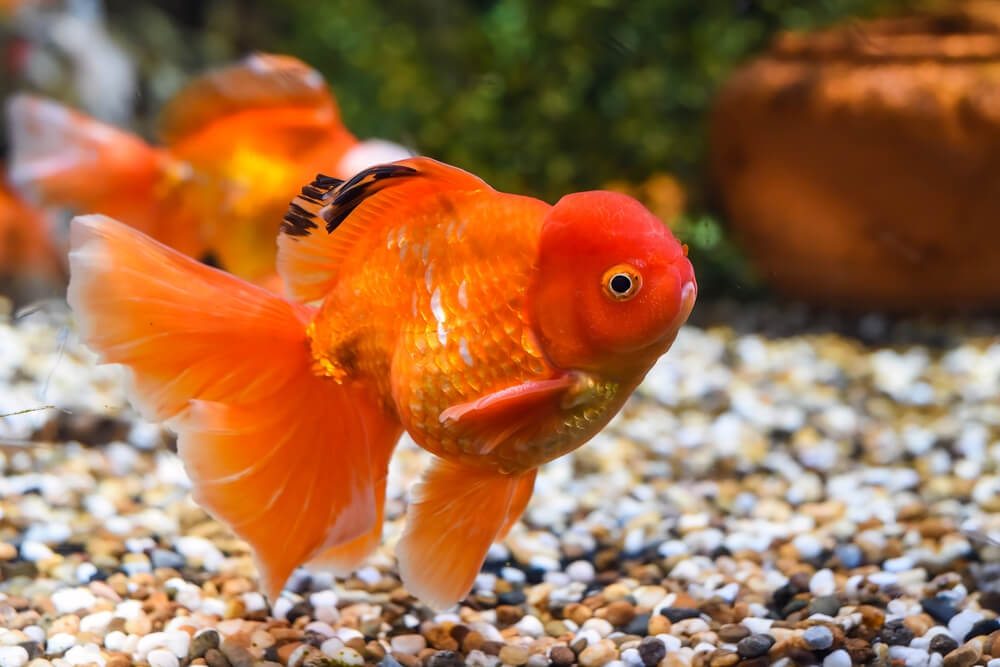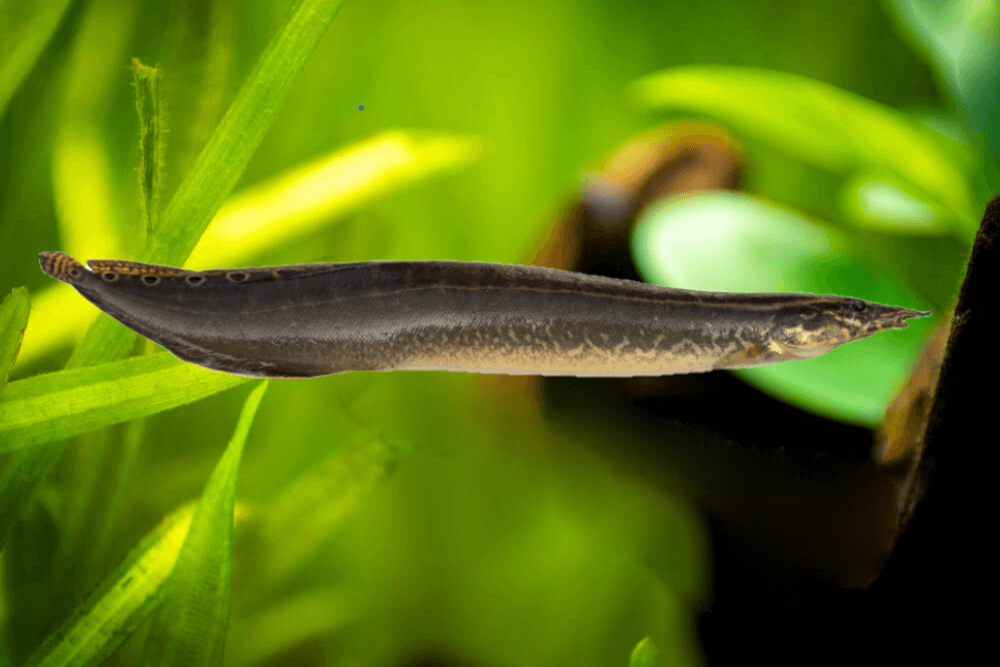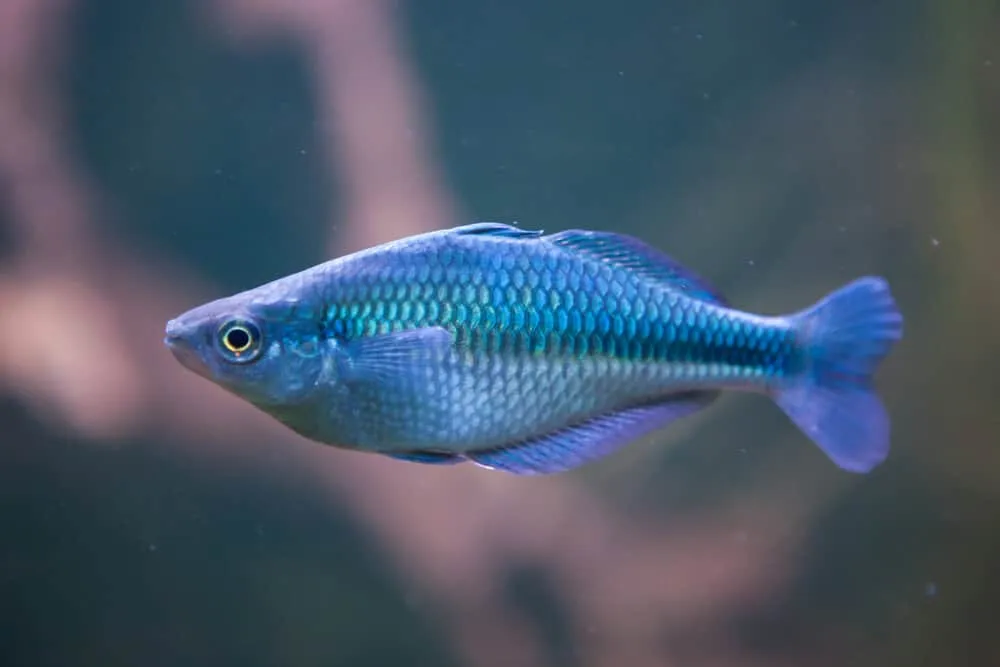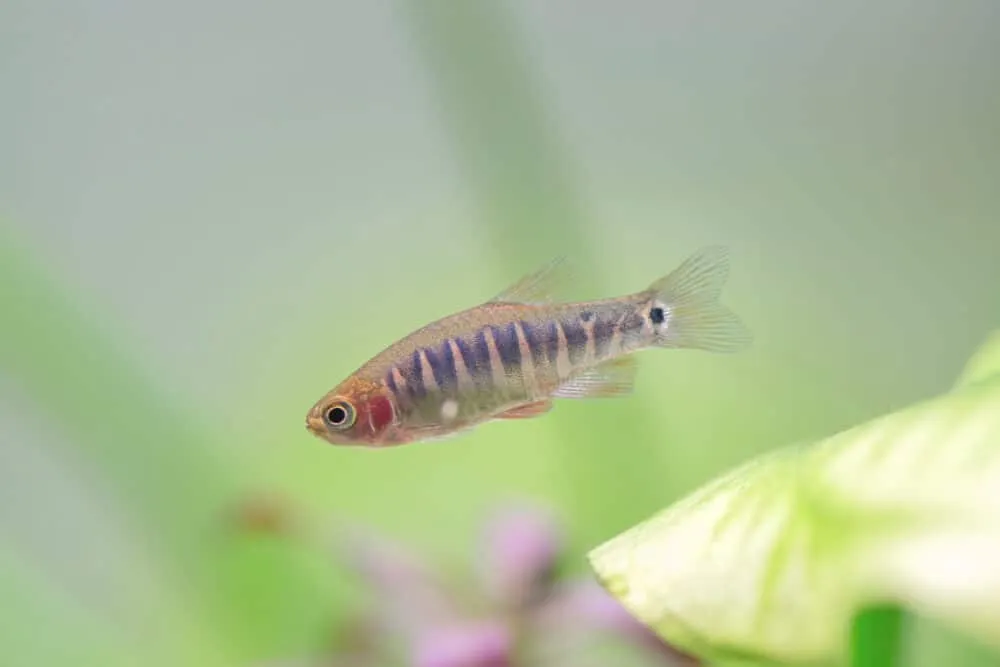Imagine having a mesmerizing aquatic beauty swimming gracefully in your home aquarium – the Oranda Goldfish. With its distinctive, elegant appearance, this goldfish variety is a sight to behold. Originating from China, the Oranda Goldfish boasts an eye-catching head growth called the “wen,” which gives it a charming and regal look. Its flowing fins and vibrant colors add to its allure, making it a popular choice among fish enthusiasts. Let’s dive into the fascinating world of the Oranda Goldfish, exploring its unique features, care requirements, and the joy it brings to any fish lover’s life.
Appearance
Shape
The Oranda goldfish is known for its distinctive shape, with a rounded body and a prominent wen, or head growth, on its dorsal region. The wen resembles a fleshy hood that covers the top of the head and extends down towards the cheeks. This unique feature gives the Oranda a regal and elegant appearance, making it a popular choice among goldfish enthusiasts.
Coloration
Oranda goldfish come in a wide range of vibrant colors, adding to their visual appeal. The most common color variations include red, orange, gold, black, and calico. However, breeders have also developed other color variations such as blue, chocolate, and panda. The coloration of an Oranda is an important factor that enthusiasts consider when choosing their ideal pet.
Size
In terms of size, Orandas are generally large goldfish, reaching an average length of 8 to 12 inches (20 to 30 centimeters) when fully grown. However, with proper care, some individuals have been known to grow even larger. Their size, coupled with their unique appearance, makes them a centerpiece in any aquarium.
History
Origin
The exact origin of the Oranda goldfish is not well-documented, but it is believed to have originated in China during the late 1500s. The development of the Oranda involved selective breeding of several goldfish varieties, resulting in the unique wen growth on its head. Its name, “Oranda,” is derived from the Japanese word for “Holland,” as the goldfish was introduced to Japan by Dutch traders.
Evolution
Over the years, the Oranda goldfish has undergone further evolution through selective breeding. Breeders have focused on enhancing the size of the wen, creating more elaborate and intricate head growths. This continuous breeding has led to a wide variety of Oranda strains, each with its own unique characteristics and features.
Popularity
The Oranda goldfish has gained immense popularity among hobbyists and aquarists worldwide. Its beautiful appearance and unique head growth make it a sought-after fish for both beginner and experienced fishkeepers. The Oranda’s striking colors and elegant swimming style have captivated the hearts of many, making it one of the most beloved goldfish varieties.
Habitat
Natural environment
In their natural environment, Oranda goldfish are found in slow-moving rivers, ponds, and lakes in China and Japan. These water bodies typically have vegetation, which provides them with both shelter and a source of food. Orandas prefer cooler water temperatures ranging from 65 to 72 degrees Fahrenheit (18 to 22 degrees Celsius).
Tank setup
When keeping Oranda goldfish in a tank, it is important to recreate a suitable environment that mimics their natural habitat. A spacious tank with a minimum capacity of 20 gallons is recommended to accommodate their size. Providing plants, rocks, and other decorations not only enhances the aesthetic appeal of the tank but also serves as hiding places and resting spots for the Orandas. Additionally, a filtration system and regular water changes are crucial to maintaining healthy water conditions for these goldfish.
Care and Maintenance
Tank requirements
To ensure the well-being of your Oranda goldfish, it is essential to meet certain tank requirements. As previously mentioned, a sufficiently large tank with a minimum capacity of 20 gallons is necessary to allow for proper swimming space and growth. Additionally, a reliable filtration system is vital to keep the water clean and free from harmful substances. Regular monitoring and maintenance of the tank’s parameters, such as temperature and pH levels, are also crucial for optimal health.
Water conditions
Oranda goldfish thrive in a freshwater environment. It is important to maintain stable water conditions, including a pH level between 6.5 and 7.5 and a temperature within the recommended range of 65 to 72 degrees Fahrenheit (18 to 22 degrees Celsius). Regular water testing and partial water changes are essential to prevent the buildup of harmful chemicals and maintain a healthy environment for your Orandas.
Feeding
Feeding your Oranda goldfish a balanced diet is crucial to ensure their overall health and vitality. They are omnivorous, meaning they eat both plant matter and protein-based foods. High-quality commercial pellets or flakes specifically formulated for goldfish should constitute the main portion of their diet. Supplementing their diet with fresh vegetables, such as peas or lettuce, and occasional treats like bloodworms or brine shrimp provides added nutrients and variety. It is important to feed them in moderation to prevent overfeeding and related health issues.
Tankmates
When choosing tankmates for your Oranda goldfish, it is important to consider their peaceful nature and potential size. Suitable tankmates include other peaceful and similarly sized goldfish varieties, such as Ryukins, Ranchus, and Fantails. It is best to avoid tankmates that may nip at the Oranda’s delicate fins, such as certain types of tetras or aggressive fish species. Furthermore, ensuring sufficient space and suitable hiding spots for all the fish in the tank will help reduce stress and promote harmony.
Healthcare
Regular observation of your Oranda goldfish is crucial to spotting any signs of illness or abnormalities early on. Common diseases that can affect goldfish, including Orandas, include fin rot, ich, and swim bladder issues. If you notice any unusual behavior or physical changes in your Oranda, it is essential to consult a veterinarian with expertise in fish health. Providing a clean and well-maintained environment, along with a balanced diet, helps minimize the risk of health issues and contributes to the overall well-being of your Orandas.
Breeding
Mating behavior
Oranda goldfish, like other varieties, exhibit typical mating behavior. During the breeding season, males will chase females and display their brightest colors, attempting to entice the females for spawning. To encourage successful breeding, it is important to provide a separate breeding tank with appropriate spawning media, such as spawning mops or plants, which will protect the eggs.
Spawning
Once the female has released her eggs and the male has fertilized them externally, the eggs will attach to the spawning media. The parents should be removed from the breeding tank to prevent them from eating the eggs or fry. The eggs will hatch within a few days, depending on the water temperature, and the fry will emerge.
Fry care
Caring for the fry requires careful attention and specific conditions. The fry are initially very small and delicate, requiring a separate tank with gentle filtration and infusoria or powdered fry food as their initial diet. As they grow, the fry can be transitioned to finely crushed flakes or newly hatched brine shrimp. Regular water changes and monitoring of water parameters are essential for their healthy development.
Varieties
Red Cap Oranda
The Red Cap Oranda is recognized for its vibrant body coloration and the distinctive red wen on its head. This variety is highly sought after for its striking contrast and regal appearance.
Blue Oranda
The Blue Oranda displays a beautiful blue hue over its body, while its head retains the characteristic wen. This variety adds a touch of elegance to any aquarium and is highly valued by goldfish enthusiasts.
Black Oranda
Known for its deep, velvety black coloration, the Black Oranda is a captivating variety. The combination of black body and prominent wen gives it a commanding presence in any aquarium.
Calico Oranda
The Calico Oranda is a stunning variety, displaying a combination of vibrant colors, including red, orange, black, white, and sometimes blue. These multi-colored patterns make it a true work of art.
Chocolate Oranda
The Chocolate Oranda, as its name suggests, exhibits a rich chocolate-brown coloration, which sets it apart from other varieties. This distinct and rare color variation adds a touch of uniqueness to any collection.
Panda Oranda
The Panda Oranda is characterized by its black and white coloration, resembling the iconic panda bear. The combination of black and white patches creates a striking contrast, making it a favorite among goldfish enthusiasts.
Ryukin Oranda
The Ryukin Oranda is a hybrid variety that combines the features of both the Oranda and the Ryukin, resulting in a fish with a rounded body, a prominent wen, and a high dorsal fin. This unique combination makes it a visually captivating goldfish.
Lionhead Oranda
The Lionhead Oranda is a crossbreed between the Oranda and the Lionhead goldfish varieties. It possesses the iconic wen growth of the Oranda and the characteristic “wen hood” of the Lionhead, adding further charm to its appearance.
Curly Oranda
The Curly Oranda is a relatively rare variety with an unusual feature – curls in its tail fin. This unique trait makes it a fascinating and sought-after addition to any collection of goldfish.
Veiltail Oranda
The Veiltail Oranda is known for its long and flowing tail fins, which elegantly extend behind it as it swims. This variety combines the beauty of the Oranda with the graceful movement of the Veiltail, creating a visually stunning fish.
Common Issues
Diseases
Like all fish, Oranda goldfish are susceptible to various diseases, including bacterial infections, parasitic infestations, and fungal growths. Regular observation and prompt treatment are crucial in preventing the spread of diseases and maintaining the health of your Orandas. Quarantining new fish before introducing them to the main tank is also recommended to prevent potential disease transmission.
Weakening of features
As Oranda goldfish age, their head growth, or wen, can become quite large and heavy. This can sometimes lead to issues with buoyancy and swimming ability, as the weight of the wen can impede their movements. Care should be taken to ensure the wen does not become too large or obstructive, and regular trimming or grooming may be necessary to prevent any discomfort or impairment.
Poor water quality
One of the most common issues faced by goldfish owners, including Oranda enthusiasts, is poor water quality. Goldfish produce a significant amount of waste, which can quickly lead to toxic levels of ammonia and nitrites in the water. Regular maintenance, including partial water changes and proper filtration, is essential in maintaining optimal water quality for your Orandas.
Inadequate diet
Providing a balanced and varied diet is crucial for the health and well-being of your Oranda goldfish. Feeding them low-quality or inappropriate foods can result in nutritional deficiencies, digestive issues, and overall poor health. It is important to research and provide high-quality commercial goldfish food and supplement their diet with fresh vegetables and protein-based treats.
Famous Orandas
The Emperor
The Emperor is a legendary Oranda goldfish, known for its large and impressive head growth. With its regal appearance and vibrant colors, The Emperor captures the attention and admiration of all who see it.
The Crown Prince
The Crown Prince is a highly esteemed Oranda goldfish, recognized for its striking coloration and flawless fins. This majestic fish truly lives up to its title as a member of goldfish royalty.
The Duchess
The Duchess is a graceful and elegant Oranda goldfish, with a delicate head growth and a calm demeanor. Its refined beauty and tranquil presence make it a cherished member of many aquariums.
The Monarch
The Monarch is a grand and majestic Oranda goldfish, boasting magnificent size, vibrant colors, and an impressive head growth. This illustrious fish commands attention wherever it swims, truly living up to its regal name.
Interesting Facts
Uniqueness of head growth
One of the most fascinating aspects of the Oranda goldfish is its head growth, or wen. This feature sets the Oranda apart from other goldfish varieties and adds to its distinctive appearance. The size, shape, and texture of the head growth can vary greatly between individuals, making each Oranda truly unique.
Symbolism in different cultures
In Chinese culture, goldfish, including Orandas, have long been associated with wealth, prosperity, and good luck. They are often seen as a symbol of abundance and fortune. In Japanese culture, goldfish are admired for their beauty and grace and have become popular ornamental fish. These cultural associations have contributed to the popularity of Oranda goldfish as pets.
Oranda as pets
Oranda goldfish are popular pets due to their beautiful appearance, peaceful temperament, and ease of care. Their vibrant colors and unique head growth make them a delight to watch and care for. However, it is essential to provide them with a suitable environment and proper care to ensure their health and well-being.
Conclusion
The Oranda goldfish is a captivating and beloved variety, known for its distinctive appearance, vibrant colors, and unique head growth. From its origins in China to its popularity worldwide, the Oranda has captured the hearts of countless goldfish enthusiasts. With proper care, an appropriate tank setup, and a balanced diet, these regal fish can thrive and bring beauty and joy to any aquarium. Whether you are a seasoned goldfish enthusiast or a new hobbyist, the Oranda goldfish is a wonderful addition to your aquatic family, adding grace, elegance, and a touch of royalty to your aquatic haven.







